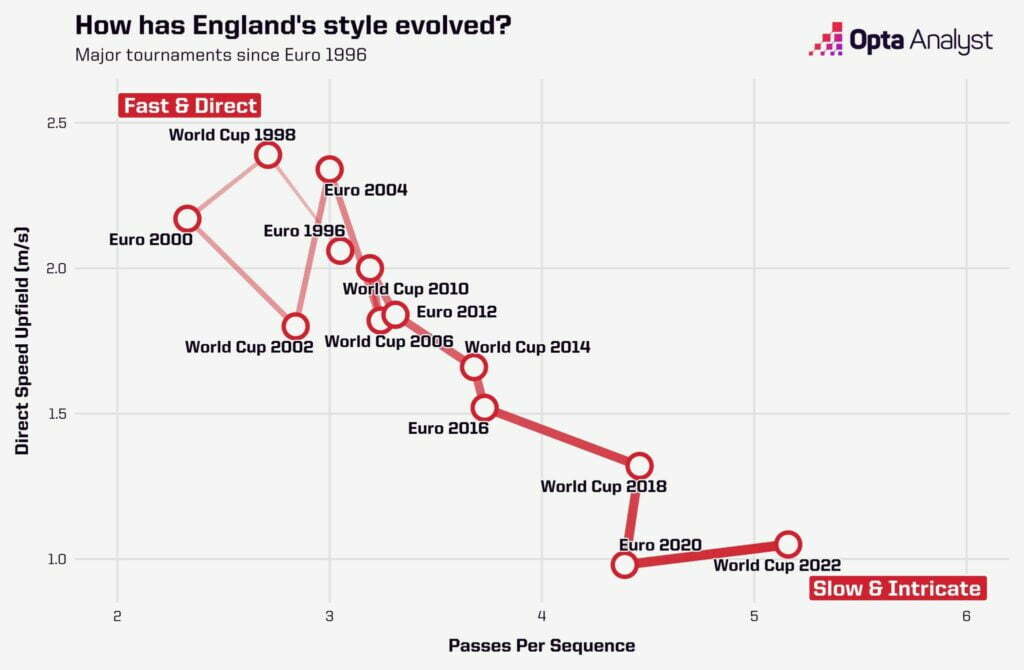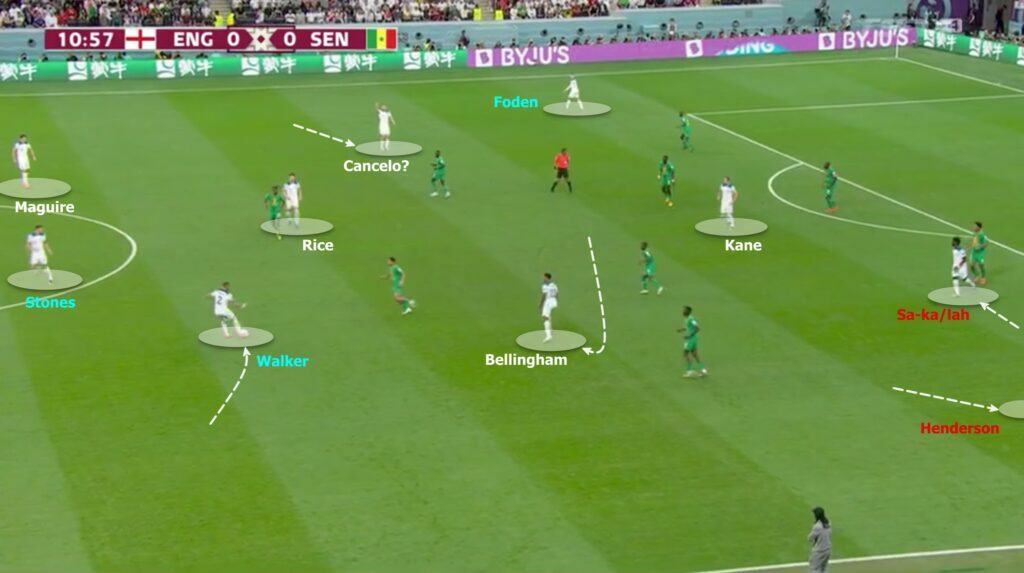In a document called DNA of English football published in 2014, there is a paragraph about how the teams of this country’s football are played.
- The way England’s football teams play will be the clearest display of English football’s DNA.
- England teams aim to control the ball Wisely, CHOOSE the correct TIME to develop forward and impose.
- England teams aim to get the ball back Wisely, as quickly and as efficiently as possible. Every aspect of the no-ball orientation needs to BE CONSIDERATION based on the game, the game context and the tactical options set out before the game.
- England teams need to FEEL the change of game with and without the ball in order to react WISDOMLY and INstinctively.
- England teams will get STRATEGIC DIFFERENCE, based on the players in the squad and the requirements of the match or tournament.

The image is relatively relatable from the position of English players when controlling the ball in the opponent’s half.
At many times, Gareth Southgate’s England team has many similarities in the way it operates with the top clubs in the Premier League. The group of players on the right wing includes Walker in the role of Walker at Man City, Henderson in the role of Henderson at Liverpool, and Saka resembles Saka at Arsenal but resembles Salah at Liverpool. Foden clings to the left, Shaw sticks to the middle. Bellingham, Maguire, Kane or Rice also play no different in their club colors.

To say that Mr. Southgate studied Mr. Guardiola and Mr. Klopp or Mr. Mourinho Mr. Conte Mr. Terzic Mr. Ten Hag is not quite. Rather, England’s best individuals are placed in the roles they perform at their best, logically. Together these individuals form teams that coordinate according to the custom of the club they are playing for. The position structure is therefore created in a very natural way, because that is also the most reasonable option.
When having the ball, the fact that each player can play according to their own habits makes England easier to operate, which shortens the training process.
Reading these lines, do you think of anyone other than Gareth Southgate?
back to 3-4-3 baby?

